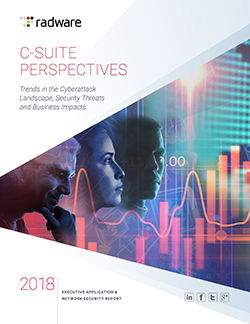Flexibility and elasticity. Both rank high on the corporate agenda in the age of digital transformation and IT is no exception. From the perspective of IT, virtualization and cloud computing have become the de facto standard for deployment models. They provide the infrastructure elasticity to make business more agile and higher performing and are the reason why the majority of organizations today are operating within a hybrid infrastructure, one that combines on-premise with cloud-based and/or virtualized assets.
But to deliver the elasticity promised by these hybrid infrastructures requires data center solutions that deliver flexibility. As a cornerstone for optimizing applications, application delivery controllers (ADCs) have to keep pace in the race for flexibility. The key is to ensure that your organization’s ADC fulfills key criteria to improve infrastructure planning, flexibility and operational expenses.

One License to Rule Them All
Organizations should enjoy complete agility in every aspect of the ADC service deployment. Not just in terms of capabilities, but in terms of licensing . Partner with an ADC vendor that provides an elastic, global licensing model.
Organizations often struggle with planning ADC deployments when those deployments span hybrid infrastructures and can be strapped with excess expenses by vendors when pre-deployment calculations result in over-provisioning. A global licensing model allows organizations to pay only for capacity used, be able to allocate resources as needed and add virtual ADCs at a moment’s notice to match specific business initiatives, environments and network demands.
[You may also like: Maintaining Your Data Center’s Agility and Making the Most Out of Your Investment in ADC Capacity]
The result? Dramatically simplified ADC deployment planning and a streamlined transition to the cloud.
An ADC When and Where You Need It
This licensing mantra extends to deployment options and customizations as well. Leading vendors provide the ability to deploy ADCs across on-premise and cloud-based infrastructures, allowing customers to transfer ADC capacity from physical to cloud-based data centers. Ensure you can deploy an ADC wherever, whenever they are required, at the click of a button, at no extra cost and with no purchasing complexity.
Add-on services and capabilities that go hand-in-hand with ADCs are no exception either. Web application firewalls (WAF), web performance optimization (WPO), application performance monitoring...companies should enjoy the freedom to consume only required ADC services rather than overspending on bells and whistles that will sit idle collecting dust.
Stay Ahead of the Curve
New standards for communications and cryptographic protocols can leave data center teams running amok attempting to keep IT infrastructure updated. They can also severely inhibit application delivery.
Take SSL/TLS protocols. Both are evolving standards that ensure faster encrypted communications between client and server, improved security and application resource allocation without over-provisioning. It allows IT to optimize the performance of applications and optimize costs during large scale deployments.
[You may also like: The ADC is the Key Master for All Things SSL/TLS]
Combining the flexibility of an ADC that supports the latest standards with an elastic licensing model is a winning combination, as it provides the most cost-effective alternative for consuming ADC services for any application.
Contain the Madness
The goal of any ADC is to ensure each application is performing at its best while optimizing costs and resource consumption. This is accomplished by ensuring that resource utilization is always tuned to actual business needs.
Leading ADC vendors allow ADC micro-services to be added to individual ADC instances without increasing the bill. By supporting container orchestration engines such as Kubernetes, it allows the organization to adopt their ADC to the application capacity. This also simplifies the addition of services such as SSL or WAF to individual instances or micro-services.
[You may also like: Simple to Use Link Availability Solutions]
Finding an ADC vendor that addresses all these considerations requires expanding the search from focusing on mainstream vendors. To drive flexibility via IT elasticity means considering all the key ADC capabilities and licensing nuances critical to managing and optimizing today’s diversified IT infrastructure. Remember these three
keys when evaluating ADC vendors:
- An ADC licensing model should be an catalyst for cutting infrastructure expenditures, not increasing them.
- An ADC licensing model should provide complete agility in ever aspect of your ADC deployment.
- An ADC license should allow IT to simplify and automate IT operational processes.

Read the “2018 C-Suite Perspectives: Trends in the Cyberattack Landscape, Security Threats and Business Impacts” to learn more.
Download Now